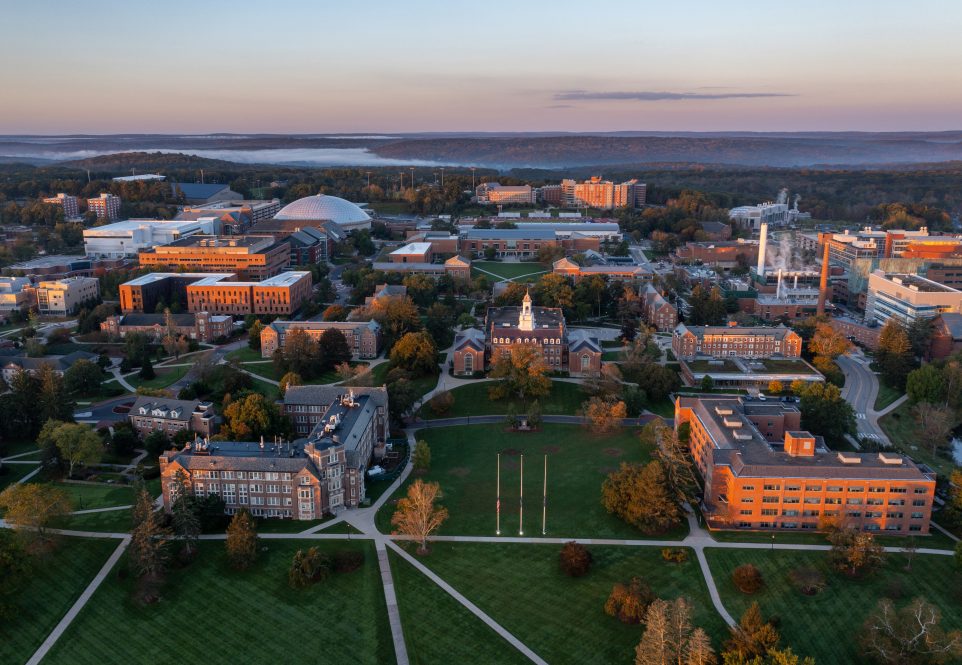UConn has surpassed a major threshold in applications for the Class of 2028 and skyrocketed to a new record, defying national trends and underscoring its national reputation for providing strong academics at a good value.
More than 56,700 aspiring Huskies have already applied for spots in this fall’s entering class – the first time that UConn has passed 50,000 – and the number keeps growing as applications continue to come in for the four regional campuses.
The tally also easily surpasses last year’s approximately 48,000 applicants, which in turn represented a jump over the previous year’s number of about 43,000.
In fact, first-year student applications to Storrs have increased 18% in just the past two years, and 21.5% in that same time to the campuses in Hartford, Stamford, Avery Point, and Waterbury.
The application increases come as UConn’s profile continues to rise, with the Wall Street Journal ranking it recently as No. 9 among the nation’s public colleges and universities.
The University also continues to receive stellar marks in the annual U.S. News & World Report rankings, and this month was recognized among the nation’s top producers of Fulbright U.S. Student Program award recipients for the first time.
The strong interest in UConn also defies state and national demographic trends, in which the number of school-aged teens has been decreasing and many institutions have struggled with declines in applications.
“When I speak with other university presidents, many say that these trends have made it more difficult for their institutions to attract large applicant pools,” UConn President Radenka Maric says. “We are proud that UConn’s reputation for academic excellence continues to draw so many talented students each year.”
All told, UConn is on track to have almost 24,500 undergraduates across all of its campuses this fall – including about 19,600 at Storrs — of which about 70% are Connecticut natives. And as in recent years, the highly diverse pool of applicants includes students from a wide range of locations and backgrounds, including many who would be the first generation in their families to attend college.
“Demand for UConn’s programs and opportunities continues to be strong as represented by the growth in applications each year, and especially by the impressive numbers in the current cycle,” says Vern Granger, UConn’s director of undergraduate admissions.
“We’ve seen positive momentum generated by last year’s men’s basketball championship and our top 10 ranking by the Wall Street Journal, both of which have built on UConn’s longstanding academic reputation and attractiveness to potential students,” he says.
Admissions offers will start going out to Storrs campus applicants on or shortly before March 1, and continue in the days and weeks after that for those who were late applicants.
The U.S. Department of Education is releasing a simplified FAFSA (Free Application for Federal Student Aid) this year, easing the process of applying for financial aid. As a result, FAFSA results to institutions are delayed.
Consistent with other institutions, barring any additional delays, UConn expects to receive the FAFSA data and send the financial aid offers to admitted students well before the May 1 deadline to accept the enrollment invitation. Since the FAFSA delays affect all institutions, the issue will not disadvantage UConn’s applicants more than it would at other colleges or universities they may be considering.
“UConn is working closely with the U.S. Department of Education to minimize the impact of the delay to students, especially in the context of the choice of where to go to college in the fall,” says Nathan Fuerst, UConn’s vice president for student life and enrollment.
“We will be ready to act quickly once we have the necessary information in hand, and are confident that our prospective students who qualify for financial aid will recognize the strong value and wide range of opportunities that UConn can provide to them,” Fuerst says.
UConn increases the amount of financial aid it sets aside every year and has committed to continuing that trend in the next fiscal year that begins this summer, although those figures have not yet been finalized.
Almost 70% of UConn students receive gift aid in the form of grants and scholarships they do not have to repay, and more than $236 million in gift aid support has been made available in the current fiscal year.
Of the approximately 4,350 new first-year students expected to enroll at Storrs for the Class of 2028, there will be notable areas of growth in nursing, fine arts, and several other disciplines along with the traditionally high numbers in business, engineering, and liberal arts fields.
In addition to Connecticut high school students, UConn also continues to draw strong interest among students from other states and international applicants. While international applications dropped during and after the COVID-19 pandemic, Fuerst says they have largely rebounded to pre-pandemic numbers.
UConn also is a popular choice for students from throughout the U.S., especially bordering states and others on the East Coast within reasonable driving distance.
“The University’s strong academic reputation and positive word-of-mouth make it a very attractive option for many applicants, especially as students who attend UConn return home and tell their families and their friends about their positive experiences here,” Fuerst says.



